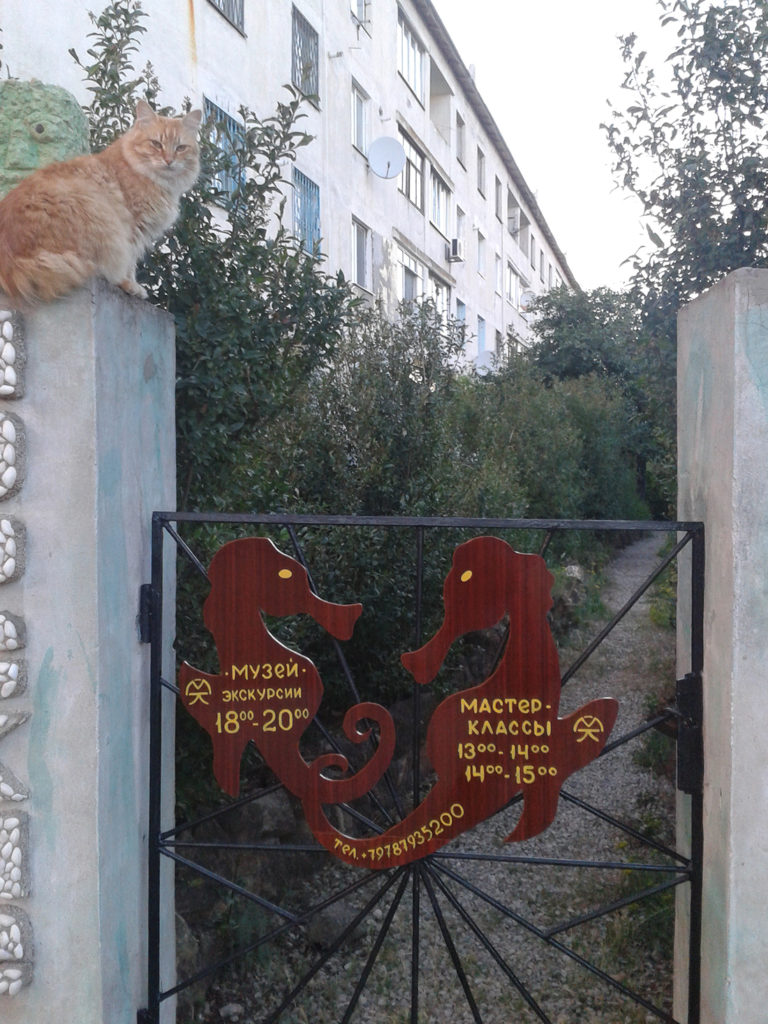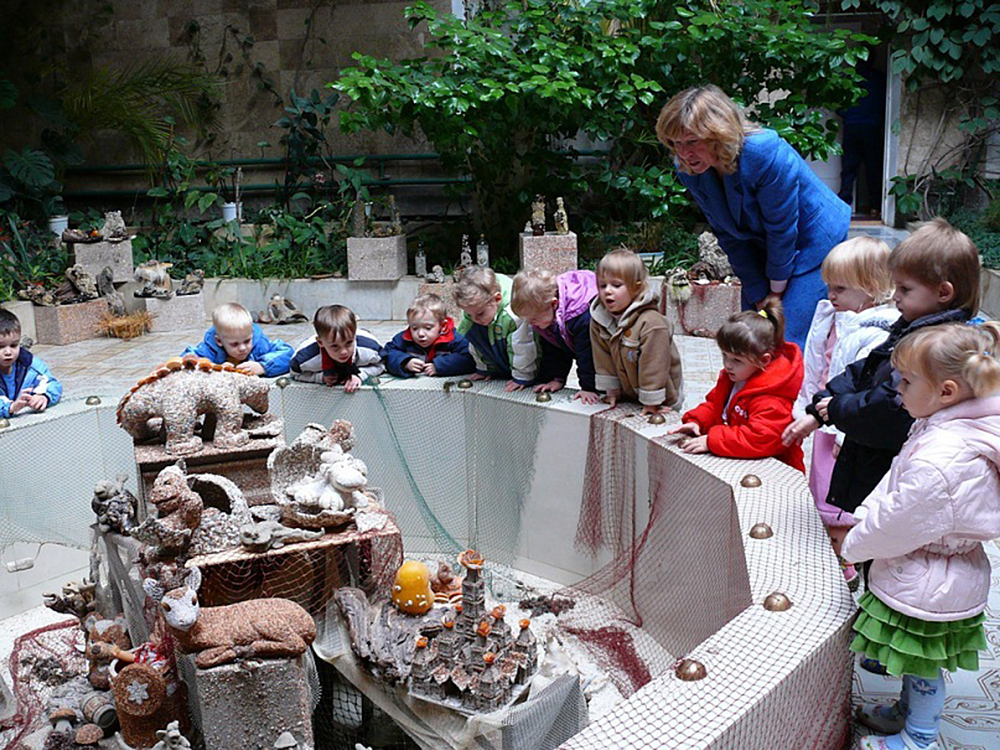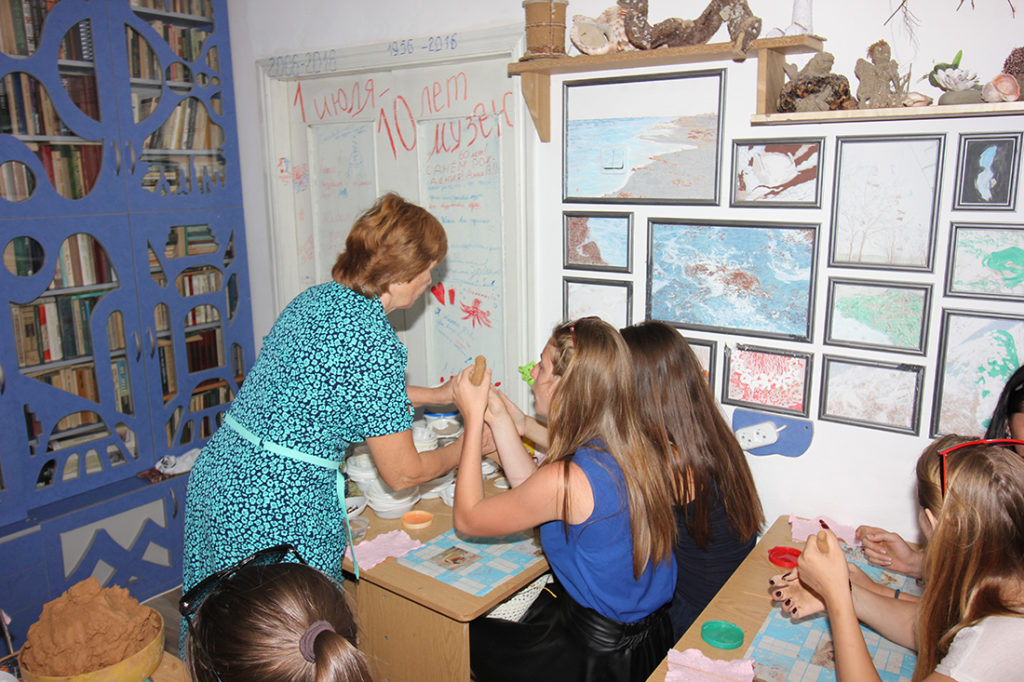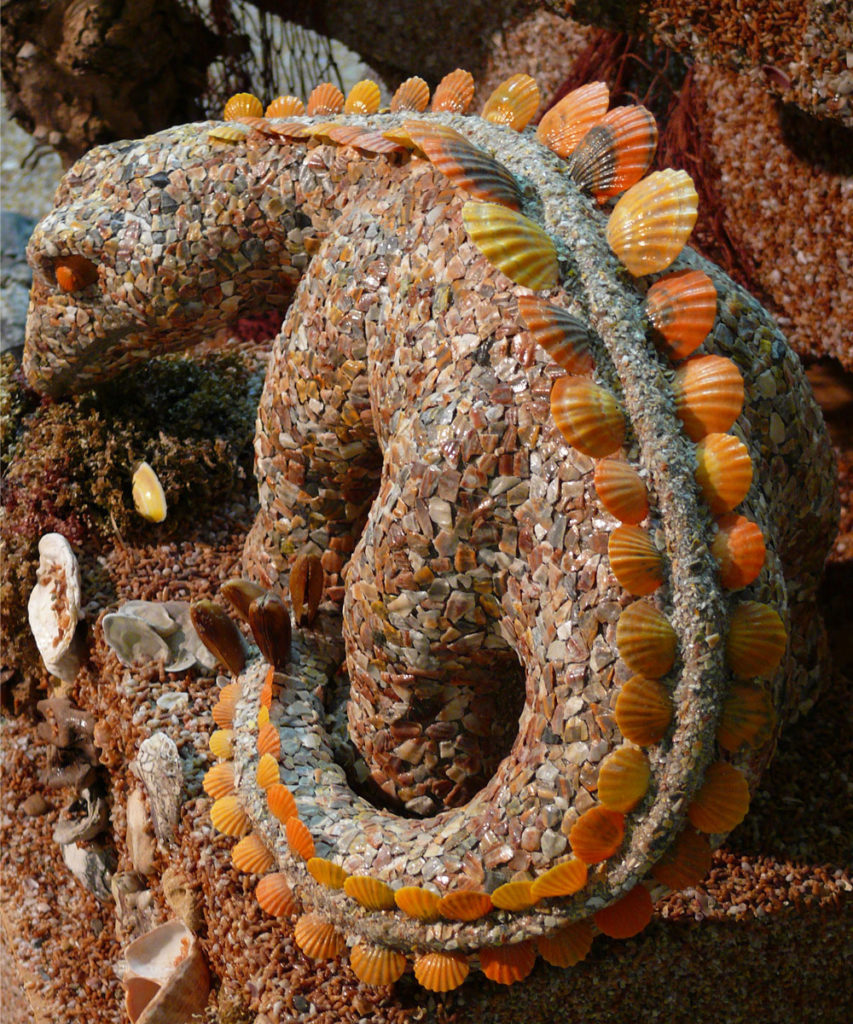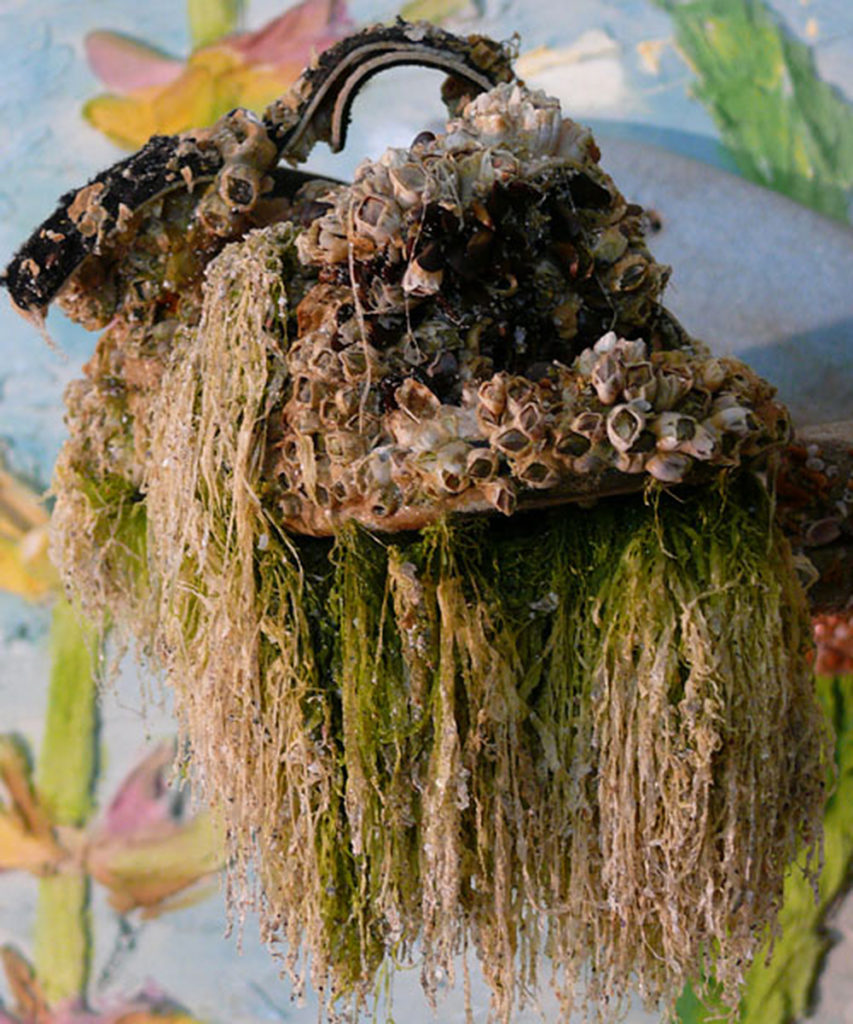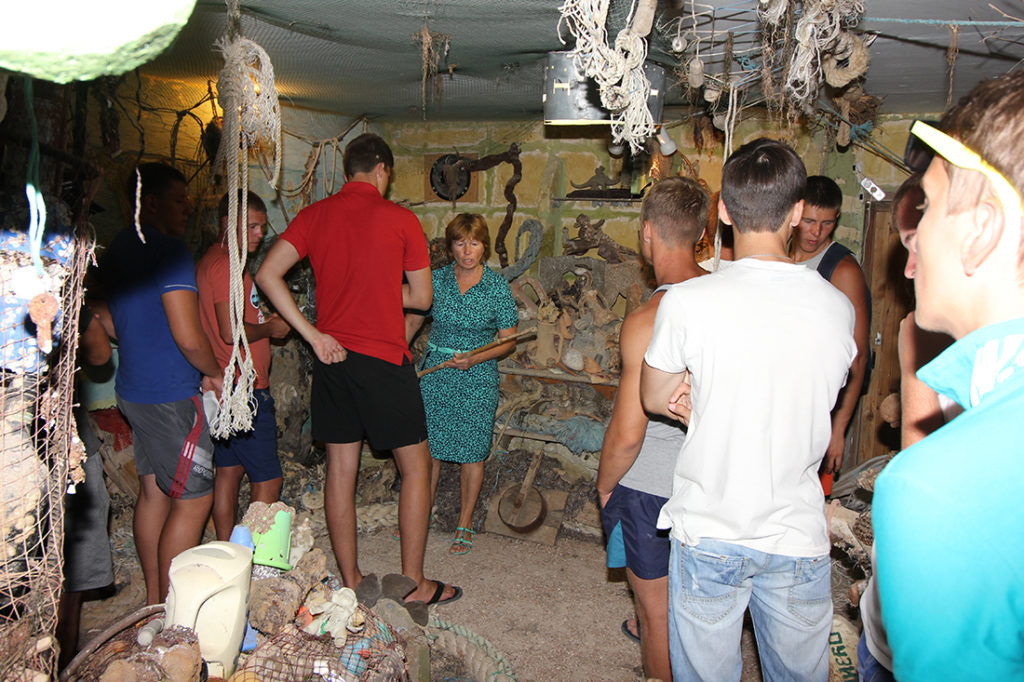The Maritime Curiosities Museum
Crimea
Contact information
Republic of Crimea, Saksky district, Shtormovoye village, Lenin ul., building 8
Tel.: +7 (978) 793-52-00
E-mail: m.lopakova@yandex.ru
Operating hours
Summer period: daily
Excursions: 18:00 – 20:00
Master classes: 13:00 – 14:00, 14:00 – 15:00
The rest of the year – by agreement
Ticket price
Free admission
Master classes – by agreement
The museum founder
Anna Viktorovna Lopakova
Founded
2006
The idea of creating a museum did not come immediately; It all started with garbage collection on the coast. When a bottle was discovered among the garbage, incredibly overgrown with all kinds of marine inhabitants, we began to collect similar objects. First, we organized an exhibition of such unusual sea design works, and then after talking with scientists and environmentalists, we began to conduct excursions. That is how such an unusual museum was formed, first in an apartment, then in the semi-basement of an apartment building.
The museum’s activities include excursions (the Black Sea pollution problems and the coast history), and master classes (working with clay, sand, shells, seaweed, painting sea stones). The museum carried out several visiting exhibitions at schools and kindergartens in Simferopol and Yevpatoriya, and was exhibited in the museum of local lore in Saki.
The museum works closely with the local school, kindergarten, and cultural center, and participates in the village public life. Local schoolchildren, as well as children who come to rest from other cities, are sometimes involved in conducting the excursions. Often such cooperation goes into projects to preserve the Black Sea, implemented by the children already in their schools and cities.
A part of the museum’s activity was charity excursions and master classes for students of the Center for the Professional Rehabilitation of Persons with Disabilities (Yevpatoriya).
The museum also provided assistance (a part of the collection was transferred as well) to the college No. 15 of Simferopol for the creation of an environmental museum on its campus.
We maintain communication with the Crimean Ecology and Peace association, the microbiologists of the Institute of the South Seas, and the Black Sea Center for Underwater Research.
The museum exposition includes:
a) all kinds of objects thrown by storms onto the coast, which are overgrown with marine inhabitants: shoes, toys, bottles, building material, cylinders, cans, wheels, ropes, etc.;
b) gifts from divers who visited the museum: ancient utensil fragments, shipboard fragments, fragments of finds from sunken ships, anchor, etc.;
c) works performed by our family based on garbage disposed of by the sea.
